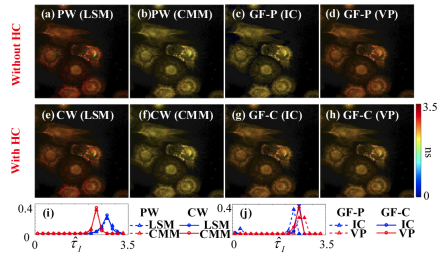A research group from the Xian Institute of Optics and Precision Mechanics (XIOPM) has recently proposed a histogram clustering (HC) method to accelerate fluorescence lifetime imaging (FLIM) analysis in pixel-wise and global fitting modes. Their up-to-date results were published in Optics Express.
FLIM is a crucial technique for assessing microenvironments of fluorophores. The fluorescence decay is usually modeled as a sum of exponential decay functions and a fluorescence decay histogram can be measured by a TCSPC system. But in the process of measurement, low photon efficiency and slow analysis have become the main bottleneck.
To enhance the analysis, several deconvolution methods have been developed such as the Laguerre expansion, the non-fitting and the global fitting methods. But these conventional methods are still not fast enough for growing demands for real-time FLlM.
Combining with a considerable number of simulated and experimental datasets, the researchers above presented a histogram clustering (HC) method. They believed that this method can not only increase analysis speed but also enhance lifetime estimation accuracy.
HC method sorts histograms with similar profiles in a dataset into several clusters, and if histograms have similar decay profiles, they are supposed to show similar decay parameters. Therefore, the researchers can average similar decay profiles in a cluster into one profile to estimate decay parameters and then assign them to all pixels. With this arrangement, we only need to process clusters instead of histograms, thus significantly speedups FLIM analysis.
Moreover, by taking the average of histograms for lifetime determination, the HC method can increase the number of photon counts and reduces noise, so it has higher accuracy than those of individual histograms in decay parameters estimating.
Finally, the researchers assessed HC methods with both simulated and experimental datasets. The results also confirmed the high efficiency and accuracy of this method.
The researchers believed that the proposed HC method can benefit applications demanding real-time FLIM such as clinical diagnosis and fast screening.
This work was supported by the Science Foundation of the Chinese Academy of Sciences, Strategic Priority Research Program of Chinese Academy of Sciences, National Natural Science Foundation of China, Medical Research Scotland and Engineering and Physical Sciences Research Council.

Comparison of algorithms with and without HC (Image by XIOPM)
Download: